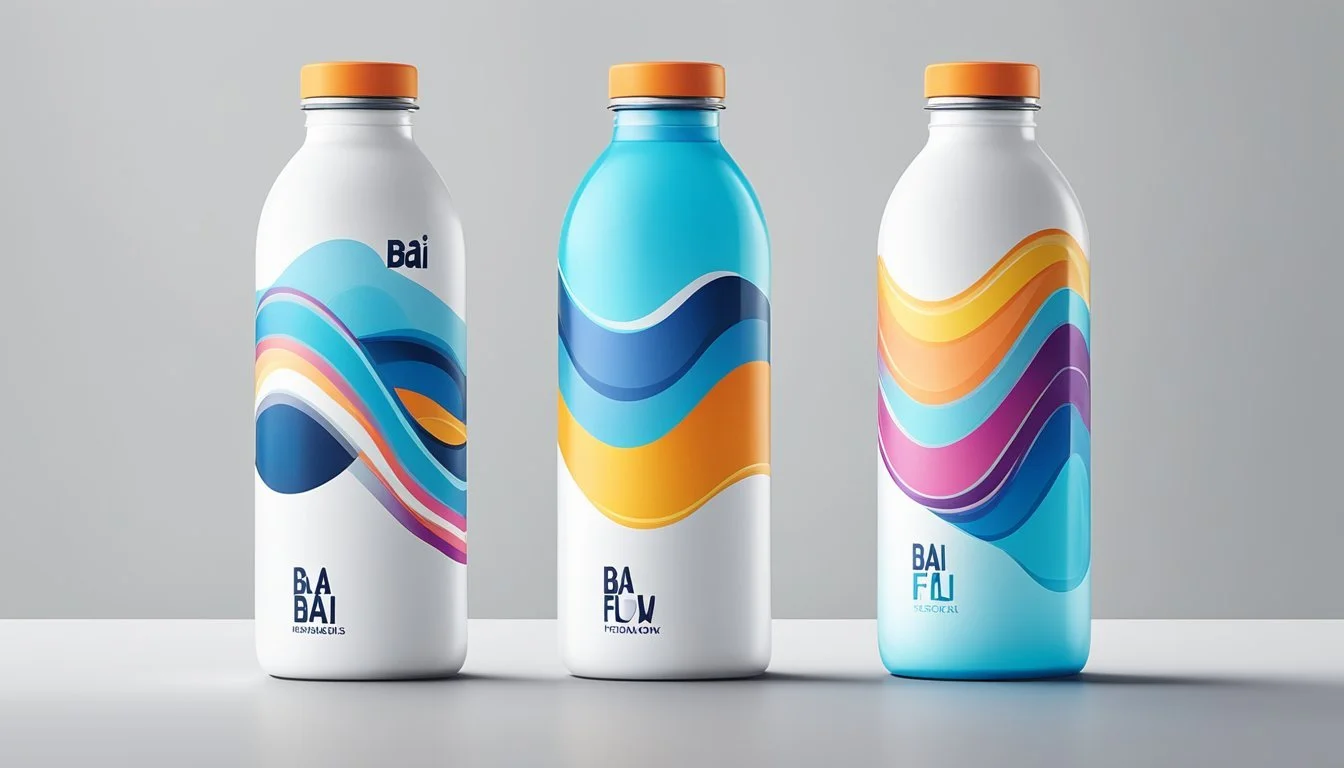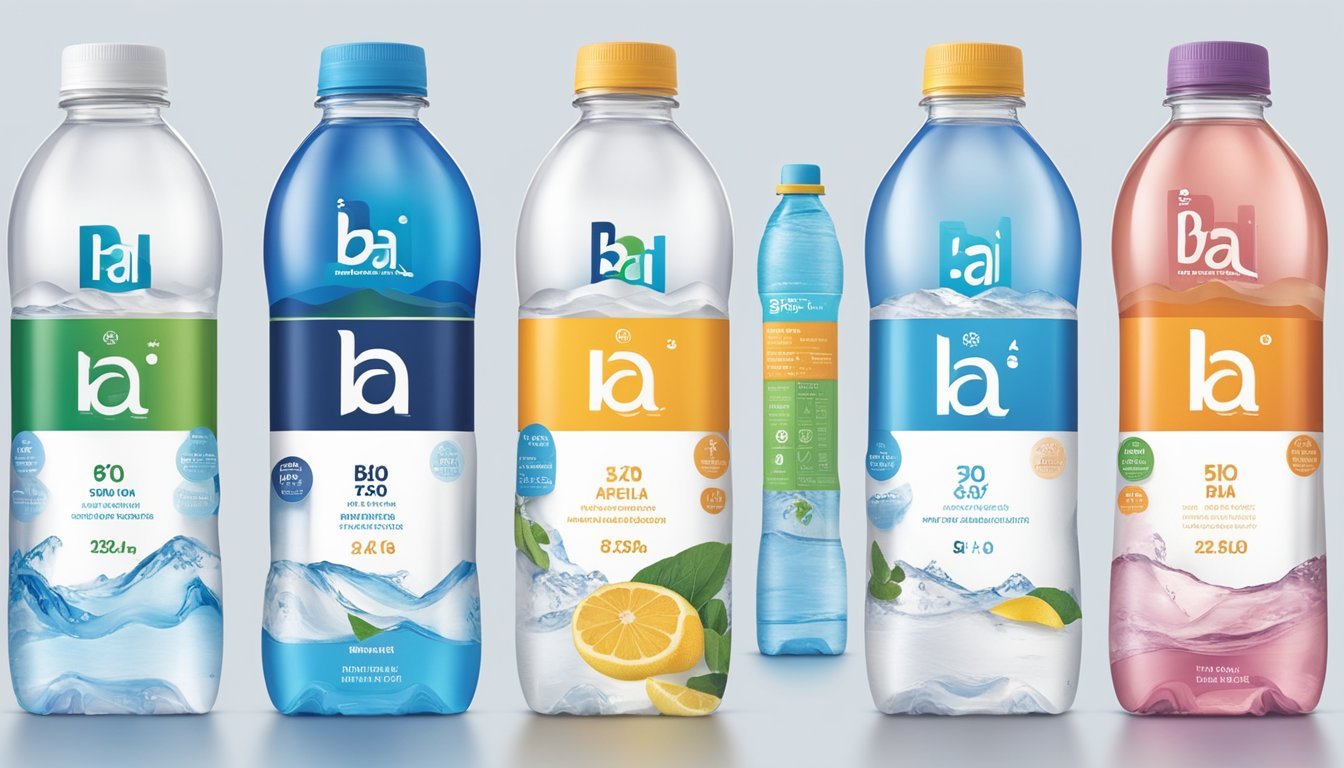Bai vs. Flow
Comparing Quality, Taste, and Value of Bottled Water
Choosing the right bottled water can be more complex than it seems, especially when considering brands like Bai and Flow. Bai offers antioxidant-infused beverages with flavors ranging from lemonades to teas, providing a unique twist by using coffee fruit extract. This gives Bai not only a distinct taste but also a nutritional edge by incorporating antioxidants and vitamin C.
Flow, known for its crisp and refreshing natural spring water, stands out for its purity and environmentally friendly packaging. Sourced from natural springs, Flow water boasts a neutral taste and a slightly alkaline pH, appealing to those who prefer a straightforward drinking experience. Its milk box-style packaging is not just eye-catching but also sustainable, making it a favorite among eco-conscious consumers.
For those prioritizing added health benefits and flavors, Bai offers an antioxidant boost and a variety of taste options. On the other hand, Flow appeals to those seeking pure, unadulterated hydration coupled with environmentally friendly packaging. Each brand caters to different preferences, making the choice between Bai and Flow largely dependent on individual priorities regarding taste, health benefits, and sustainability.
Overview of Bai and Flow
Bai and Flow are two prominent water brands, each offering a unique selection of flavors and health benefits. Both companies have distinct brand histories and missions that highlight their dedication to innovation and sustainability.
Brand Histories and Mission Statements
Bai was founded by entrepreneur Ben Weiss in 2009. Bai initially began as a maker of antioxidant infusion drinks using the coffee fruit. The brand quickly gained popularity due to its commitment to creating healthy, low-calorie beverages with a bold flavor. Bai's mission emphasizes healthy hydration combined with great taste and the benefits of antioxidants.
Flow was established in 2015 by Nicholas Reichenbach. Flow is known for its focus on sustainable packaging and environmental impact. The brand's mission revolves around providing pure, alkaline spring water with a commitment to sustainability. Flow uses Tetra Pak cartons, which are primarily made from renewable resources, making it a favorite among eco-conscious consumers.
Range of Flavors and Products
Bai offers a variety of flavored water options, including popular flavors like Bai Cocofusions and Bai Antioxidant Water. Their beverages are infused with antioxidants from coffee fruit and other natural extracts. Bai drinks typically contain 10 calories and 1 gram of sugar per serving, making them a healthy alternative to sugary drinks.
Flow provides naturally alkaline spring water in both unflavored and flavored options. Their Flavored Water line includes choices like cucumber mint and lemon ginger. Flow water is sourced from springs, offering a natural source of essential minerals. The brand's focus on minimalistic and eco-friendly packaging also sets it apart in the market.
Both Bai and Flow cater to specific consumer needs, from those seeking antioxidant-infused drinks to individuals prioritizing sustainability and mineral-rich hydration.
Nutritional Value and Ingredients
Bai and Flow offer distinct nutritional profiles and ingredient lists. Bai focuses on flavored water with added vitamins and antioxidants, while Flow provides pure, alkaline spring water with minimal additives.
Sugar Content and Sweetness
Bai contains only 1 gram of sugar per bottle, appealing to those looking for a low-sugar drink. This small amount of sugar is derived from natural fruit juices and does not significantly impact the overall calorie count.
In contrast, Flow does not contain any added sugars. Flow is essentially pure water and remains unsweetened, which makes it suitable for those avoiding any form of sugar in their beverages.
Artificial vs. Natural Sweeteners
Bai avoids artificial sweeteners entirely, opting instead for natural sweeteners like erythritol and stevia leaf extract. These low-calorie sweeteners help maintain Bai’s low calorie content, at just 10 calories per bottle.
Flow, being primarily an alkaline spring water, does not use any sweeteners, artificial or natural. This makes Flow a straightforward choice for those who prefer their water unflavored and unenhanced.
Vitamins and Antioxidants
Bai enriches its water with various vitamins and antioxidants. Vitamin C and antioxidants from coffee fruit extract are notable inclusions. These added ingredients can contribute to daily nutritional intake and offer potential health benefits, such as improved cognitive function and immune support.
Flow, on the other hand, does not include any added vitamins or antioxidants. It focuses on being a pure, natural spring water with a naturally alkaline pH, providing hydration without additional nutrients.
Health and Hydration Benefits
Both Bai and Flow offer distinct advantages in terms of health and hydration benefits. Important factors include their hydration capabilities, presence of electrolytes, energy-boosting ingredients, and potential to support a healthy immune system.
Hydration and Electrolytes
Bai is known for its antioxidant-infused beverages, which can provide hydration with the added benefit of antioxidants derived from coffee fruit extract and tea extract. Each bottle typically contains low calories and very minimal sugar, making it suitable for those monitoring their sugar intake.
Flow, on the other hand, touts itself as an alkaline spring water, naturally rich in electrolytes. Alkaline water can help balance the body's pH levels and provide minerals like magnesium, potassium, and calcium, which are essential for muscle function and hydration.
Energy and Caffeine Content
Bai beverages offer a mild caffeine content, sourced from the coffee fruit extract. This can provide a slight energy boost without the jittery effects often associated with higher-caffeine drinks. Each bottle usually contains around 35 milligrams of caffeine, making it a good option for those looking for an alternative to coffee or energy drinks.
Flow does not contain caffeine, focusing instead on pure hydration. Its electrolyte content can aid in rehydration, especially after physical activity, but it won't provide the same energy boost as Bai. For those who prefer caffeine-free beverages, Flow is a natural, hydrating option.
Supporting a Healthy Immune System
Bai incorporates antioxidants from coffee fruit and tea extracts, which may help in neutralizing free radicals and supporting immune health. Additionally, the presence of vitamin C in some Bai beverages can contribute to overall immune system support.
Flow, being pure alkaline spring water, lacks added vitamins or antioxidants. However, its natural minerals can support bodily functions, including immune health. Adequate hydration from water like Flow is crucial for maintaining a strong immune response, aiding in the proper functioning of lymphatic and other bodily systems.
Environmental and Sustainability Considerations
Environmental and sustainability concerns play a critical role in determining the preferable bottled water option. Factors such as packaging materials, sustainability certifications, and the sourcing and filtration of local water are essential considerations.
Packaging and Plastic Use
Bai typically uses plastic bottles, which can have a significant environmental impact due to the production and disposal of plastic. The use of plastic can contribute to pollution if not properly recycled.
Flow, on the other hand, is known for its eco-friendly packaging. Flow uses Tetra Pak cartons which are primarily made from paperboard and include layers of aluminum and polyethylene. These cartons are designed to be recyclable, reducing plastic waste. The different packaging choices present a clear distinction in the brands' approaches to environmental sustainability.
Sustainability Efforts and Certifications
Bai focuses on reducing its carbon footprint and promotes recycling efforts. Although Bai uses plastic bottles, they emphasize the use of 100% recycled plastic for their packaging where possible.
Flow goes further by holding various sustainability certifications. These certifications include B Corporation, which recognizes companies meeting high standards of social and environmental performance. Flow is also committed to being carbon-neutral, offsetting their carbon emissions through various environmental projects.
Local Water Sourcing and Filtration Methods
The sourcing and filtration methods of both brands reflect their approaches to sustainability. Bai sources water for its flavored beverages from various localities, using a filtration process to ensure purity and safety.
Flow sources its water from family-owned artesian springs and uses a natural filtration process. This method ensures the water is free of contaminants without depleting local water resources. Flow’s commitment to preserving natural water systems aligns with broader environmental goals.
Environmental considerations such as packaging choices, sustainability certifications, and local water sourcing significantly impact the sustainability profiles of Bai and Flow. Each brand's commitment to reducing its environmental impact varies and affects its overall ecological footprint.
Water Quality and Purity
Water quality and purity are critical factors when choosing between Bai and Flow. This section will discuss their pH levels, mineral content, filtration methods, taste and experience, product availability, and provide a detailed comparative analysis.
pH Levels and Mineral Content
Bai water is typically infused with antioxidants and vitamins, affecting its pH level. It generally maintains a neutral to slightly alkaline pH, which some customers find beneficial. Flow water, sourced from natural springs, boasts a naturally alkaline pH of 8.1.
Flow's natural mineral content includes calcium, magnesium, and potassium, contributing to its distinct taste. Bai’s water may include added minerals and vitamins. Comparing these elements helps understand their nutritional and taste impact.
Filtration and Purification Methods
Bai uses advanced filtration and purification processes. These methods ensure the water is free from contaminants and enhance the taste. The water is usually treated to remove impurities, followed by the addition of flavors and antioxidants.
Flow, sourced from natural springs, undergoes minimal processing. The water is naturally filtered through limestone, which contributes to its mineral-rich composition. This natural filtration preserves the water's purity and enhances its clean taste.
Taste and Experience
Bai offers a variety of flavored water options, infused with fruit extracts and antioxidants. These flavors include exotic options like Bolivia Black Cherry and Tanzania Lemonade Tea. Consumers appreciate the wide range of taste profiles, making hydration enjoyable.
Flow is known for its crisp, clean taste, attributed to its natural source. The water’s subtle mineral undertones appeal to those who prefer unflavored, pure spring water. The taste experience of Flow is more straightforward compared to Bai’s flavorful offerings.
Product Availability and Distribution
Bai products are widely available through various retail channels, including supermarkets, health food stores, and online platforms like Amazon. The brand’s extensive distribution network ensures consumers can easily find and purchase their preferred flavors.
Flow also boasts a strong distribution network, available in health food stores, supermarkets, and online retailers. The eco-friendly tetra packs contribute to the brand’s environmental appeal. Both brands ensure their products are accessible to a broad audience.
Comparative Analysis of Bai and Flow
Bai stands out with its antioxidant-infused drink options, offering both hydration and added nutrients. The various flavors cater to diverse taste preferences. Bai is also gluten-free and low in calories, fitting well into health-conscious lifestyles.
Flow excels in providing naturally alkaline spring water with a clean, pure taste. The minimal processing maintains the water's natural mineral content. Flow's commitment to sustainability, using eco-friendly packaging, adds to its appeal.
Aspect Bai Flow pH Level Neutral to slightly alkaline Naturally alkaline (8.1) Mineral Content Vitamins and added minerals Natural minerals (calcium, magnesium) Filtration Advanced filtration and flavor infusion Natural filtration through limestone Taste Profile Flavored, fruit extracts, antioxidant Crisp, clean, subtle mineral taste Availability Supermarkets, online (Amazon) Supermarkets, online Sustainability Regular plastic bottles Eco-friendly tetra packs
Final Recommendations
For consumers seeking a variety of flavors and added nutritional benefits, Bai provides a refreshing choice. The antioxidant-infused options are excellent for those looking to enhance their hydration experience.
Flow, with its natural spring water and eco-friendly packaging, appeals to those prioritizing purity and environmental impact.




